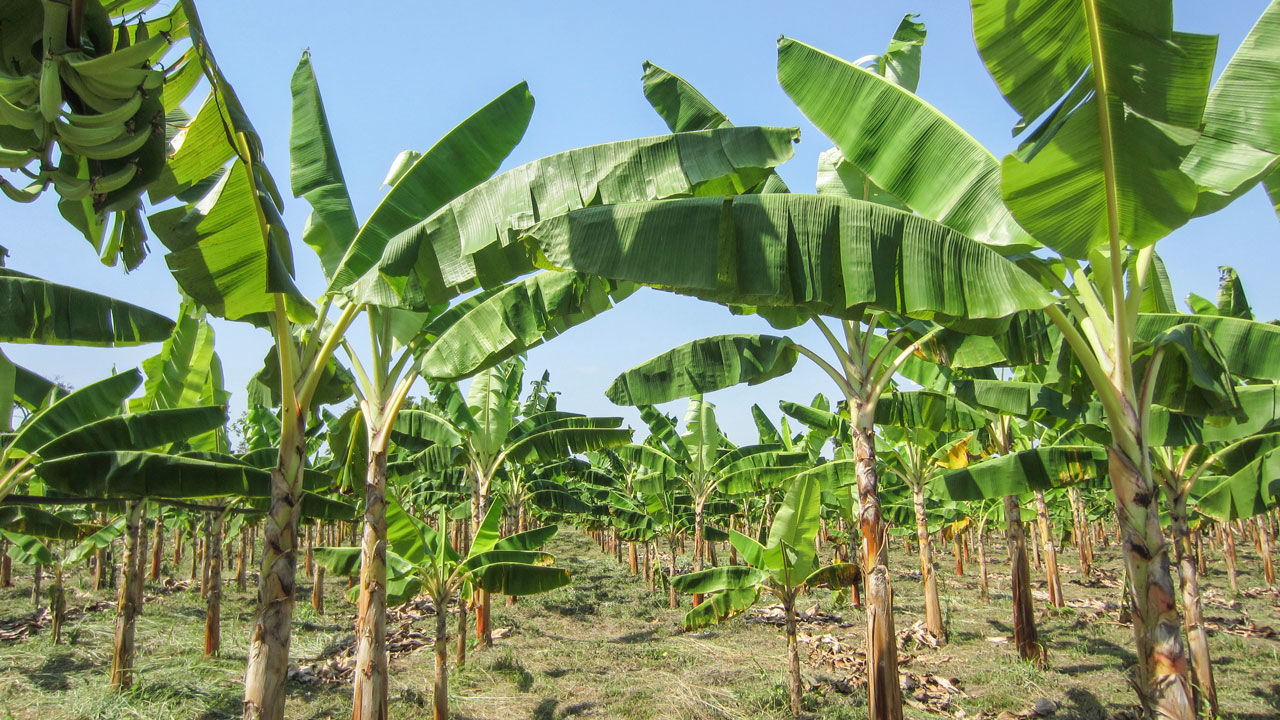Unraveling The Mystery Behind Uganda’s Banana Disease


Uganda ranks 23rd globally in desert banana production. About 70 percent of the total produce serves as a staple for the population. In fact, it is estimated that banana provides about 20 percent of the total calorie consumption per capita. Ugandan farmers have had to deal with banana bacterial wilt in the past. However, this time, it is a mysterious banana disease that is threatening the production of this valuable commodity.
Western Uganda is the worst hit by the mysterious banana disease which is spreading really fast. Farmers are already counting their losses while some accuse the government of not doing enough. The slow response by the government is the cause of rising panic among farmers. However, the Ministry of Agriculture is charging the central government to intervene to contain the outbreak. Reacting to the mysterious banana disease, Isingiro District chairman, Jeremiah Kamulari said,
“We are just recovering from the banana bacteria wilt, our plantations are new and now we are affected by this deadly disease. Scientists say they do not know how it spreads and not even how it would be controlled. The government must come up with a measure through research as soon as possible to save farmers.”
The banana disease has become worse in the last few weeks, spreading to 10 more districts. The first report of the disease was in July 2019. However, it has reached an epidemic level Mr. Fred Ndagano is a farmer in Kibaare in the New Rwampara District. He lost 8 acres of his banana plantation to the disease. In an interview he said,
“I have called almost everyone concerned but there has not been anyone coming to visit my banana plantation. I do not know what to do.”
Conflicting Opinion on the cause of the mysterious Banana Disease
The mysterious banana disease does not affect the entire plant. The most significant effect is the blackening of the banana fingers. A large number of online media say the new banana disease is in the anthracnose fungal category. An entomologist at the National Agriculture Research Laboratories (NARL), Jerome Kubiriba said,
“The black spots on the banana peel is caused by a specific insect which keeps scratching and making black fungal coat spots on the peel.”
Further confirming the possible source of the disease was Stephen Byantwale, the Commissioner for crop protection at the Ministry of Agriculture, Animal Industry and Fisheries (MAAIF). Byantwale said, “We suspect it to be anthracnose.” However, Byantwale also affirms the ministry took samples of the affected crops to the government laboratory to determine the particular infectious agents. Anthracnose is a group of fungal diseases that affect a wide range of plants. It often leads to dark lesions on leaves, stems, fruits, and flowers of plants.
However, another report on the Monitor in late February says the agent of the disease may be a virus and fungus. This new finding was credited to Dr. Halid Kirunda, the National Agricultural Research Organization (NARO) director for Mbarara zonal area. According to Dr. Kirunda, the name of the virus was Cadona. Speaking with the Monitor, Dr. Kirunda said,
“A team from the banana programme at Kawanda picked samples and analyzed. In the process, the scientists discovered a pathogen, a virus. The major question was what was triggering the increase in the deadliness and spread of the virus.”
Prevention and Control
Although the new mysterious banana disease is not as serious as bacterial banana wilt, it can lower the market value of the affected fruits. Byantwale blames the disease on climate change. However, poor sanitation and aeration also increase the spread of the disease. According to experts, the use of resistant cultivars is the best remedy. Also, farmers are advised to observe practices like mulching, crop rotation, and timely weeding.
Experts also discourage practices like overhead irrigation and the use of dirty gadgets for pruning. Also, a specialist at NARL, Josephine Namaganda tells farmers to look out for pests especially weevils and nematodes. Like most scientists, Namaganda advises farmers to plant resistant varieties. However, not all farmers are comfortable with genetically modified bananas. Mr. Muyambi Ellady, a 44-year-old resident of Mbarara blames NARO for the disease. In a Facebook comment, Ellady said,
“Ugandan scientists and their foreign counterparts are responsible for such diseases. I warned them when they started their GMO research in Uganda that they are bringing us trouble.”
It appears the lasting solution to the frequent disease outbreaks is the planting of modified variety. However, we would love to know what you think about GMOs. Are you comfortable with eating modified plants or do you think they are potential sources of harm? Let us know your opinion in the comment box below.







Responses